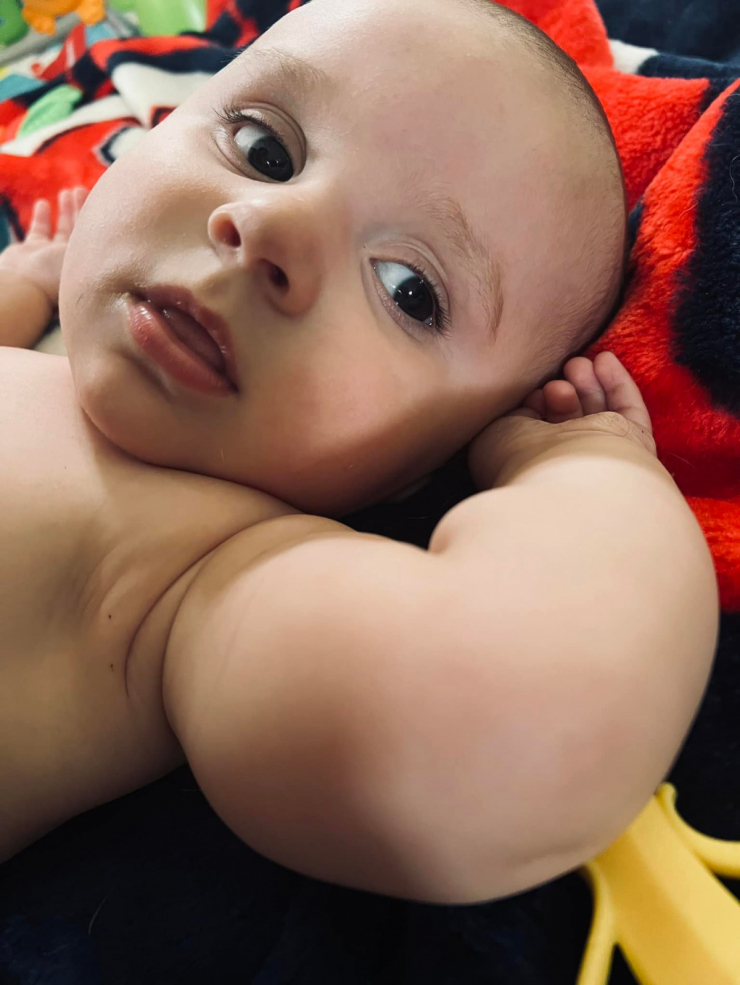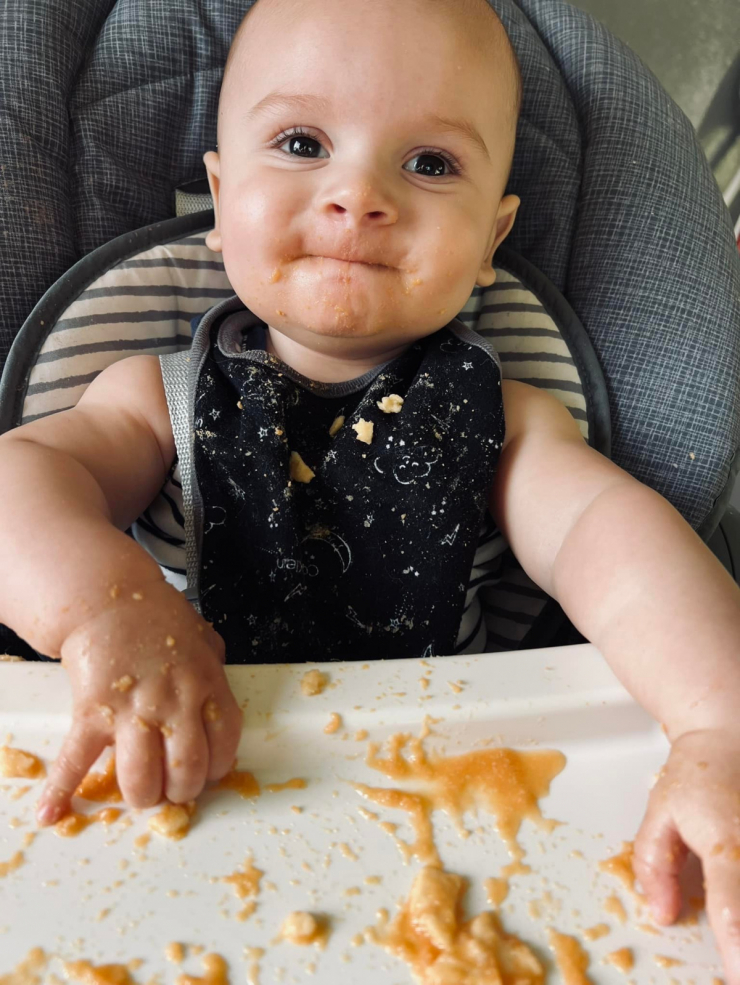
Here, it’s more direct. All of those contributions come together to equal true, life-changing grants that benefit true, awe-inspiring recipients.

We often refer to ourselves as the Oprah Winfrey of wheelchair-accessible vans (“You get a van! YOU get a van!”), and that’s true – accessible vehicles are a big part of what we do.

It’s also completely necessary because insurance won’t cover the cost. It effectively strands individuals and their caregivers in their homes, relegated to using inconsistent and unreliable medical transport or simply foregoing any activity that isn’t absolutely critical.
But while vans are one of the most requested grant items, they don’t represent the full picture of how we support families. We’ve asked donors to help us support Veterans with service dogs, and you answered.

We’ve asked donors to modify homes for first responders facing new mobility challenges, and you answered.

We’ve asked you to help us fund robotic wheelchairs, hyperbaric chambers, intensive therapy, and medical equipment, and each time, you answered.
This time, we asked you to fund a fence.

You might be wondering how that could possibly be impactful. How that could open up new possibilities for a family. Allow us to introduce you to Kelsey, Michael, and their 1-year-old son, James.

They say the eyes are usually the first thing you notice about someone. That’s especially true when you’re holding your newborn child.

That’s why it took a few weeks for something to begin to tug at Kelsey’s heart when she looked into James’s eyes. At first, she dismissed it as anxious new mom thoughts, calming herself with a nervous laugh and pushing down the bubbling fear. But when she noticed that her baby’s pupils weren’t dilating, that fear boiled up and spilled over into action.
Kelsey and Michael rushed their son to the hospital, and doctors began running test after test to determine if James had a neurological condition or something brain-related that was impacting his vision.

Everything kept coming back normal.
“The first ophthalmologist we saw was...how do I put this…not the best,” said Michael. “Their bedside manner was severely lacking. All they said was, ‘Well, James is blind. He can’t see.’”
The two of them were stunned. James’s eye development looked good. His brain was completely normal. So how could he possibly be blind?

“That’s when we went to the geneticist,” Michael said. “And the results revealed that Kelsey and I are both carriers of a condition called LCA1.”
It causes a mutation in the gene GUCY2D that causes early and severe vision loss and impairment. For James, it meant he was born with no vision and with very little light perception.

As the young couple grappled with the news, Kelsey pivoted into research mode. As a nursing assistant at a local medical center, she used the hospital computer to look up as much information as she could find about LCA, pouring over research on every subset of the condition and joining Facebook groups to connect with other newly diagnosed families.
They also reached out to the Cleveland Sight Center and an organization called Help Me Grow to help create a safe environment for James to learn and develop in their home.

“We realized pretty quickly that we needed to babyproof our house, especially now that he’s on the move a lot more,” Kelsey laughed. “But they also helped us understand the importance of room layout, having sensory toys for him, and even using food to help him learn.”
“We’ll take a piece of pasta, tap it on his highchair tray, and say, ‘The pasta is over here.’ Or when we’re helping him get dressed, we’ll make sure to use the words ‘right’ and ‘left’ to help orient him.”

“The diagnosis was very hard on us at first,” she admitted. “But this form of LCA just causes the eyes not to work correctly, and frankly, we knew it could be much worse. We’re thankful we have a happy and healthy baby boy.”

And while James is still very young, he’s already beginning to develop quite the personality. Music is a big part of his day, and he loves listening to James Taylor and Adele, though Whitney Houston’s “I Wanna Dance with Somebody” could probably play all day and not bother him a bit.
But his favorite, absolute favorite thing in the world is his cat, Max. James will feel Max brush up beside him and hear him purr, and then reach down to place his tiny hands on Max’s vocal cords to feel them vibrate.

“It hasn’t been exactly what we expected,” Kelsey shared, “But we wouldn’t change a thing about this journey and the decisions we’ve made.”
That includes doing everything they can to set James up for success in a world not built for the visually impaired.

Their house could be fully babyproofed and set up with the most ideal layout for James, but once they looked out their windows into the backyard, they realized they had one big problem to solve.
James loves to be outside. He has special sensory toys and even a Braille cube to start practicing the alphabet, but few things can replace the feeling of the grass under his feet or the rough bark of a tree trunk.

James’s backyard has all of those things. What it doesn’t have is a fence. With an active and highly-mobile 1-year-old on their hands, and a backyard that abuts a busy street, Kelsey and Michael knew a fence just became priority number one.
“I was going to attempt to build a fence if it was what James needed,” Michael told us. “But given my lack of skill or experience, it probably would have set us back a few years instead.”

So one day, when Kelsey was looking for new sensory toys and Braille books, she decided to do a quick Google search to see if they might be able to find some help.
That’s where you come in.

Remember that $5 bill you sent in? The $20 check you wrote? The $100 monthly payment you made year after year? It didn’t just go to a wheelchair-accessible van. Or a service dog. Or a hyperbaric chamber, intensive therapy, mobility item, or medical equipment.
It also helped build James a fence.
It gave him the freedom to toddle around his backyard with Max purring by his side, feeling the grass under his toes and touching the rough bark of a tree.
And for Kelsey and Michael, it gave them the peace of mind that he’ll be safe to explore the world with touch, and smell, and sound. Just a boy, his best friend, and a backyard. Total impact: $5,229.

Every week at Chive Charities, we witness what your donations can do. Where did that $5 go? (To a life-changing grant.) Does my $20 check even make a difference? (Every day.) Who did this donation help? (565 Veterans, first responders, military families, and rare medical diagnosees…so far.) And how? (In every way imaginable.)
That’s what your donations can do. Be part of the next life-changing moment and DONATE HERE.







































-3__small.jpg)












































































































__small.jpg)










__small.jpg)






















































































_with_flag,_jason__emily_rowley-4__small.jpg)

































































































































-2__small.jpg)



























































































































































__large.jpeg)